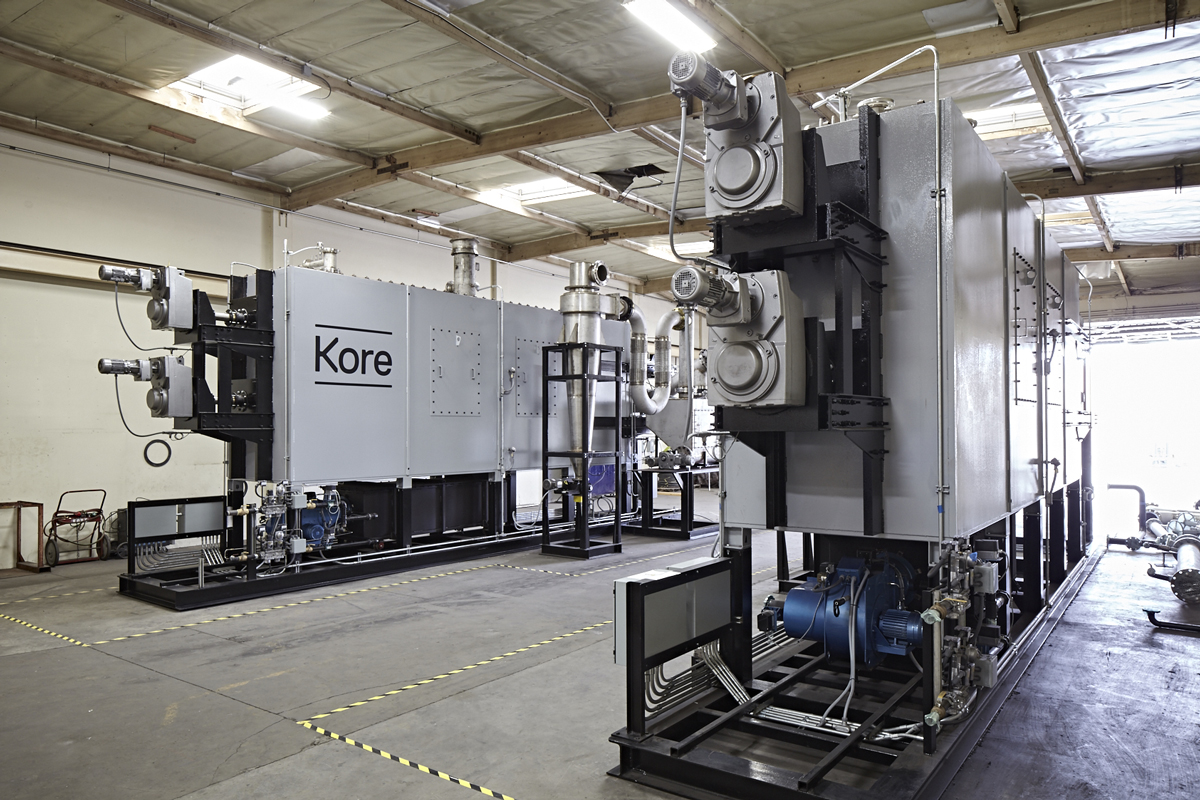California-based Kore has developed a new way to produce hydrogen from biogas. It claims the new method could potentially provide hydrogen for less than $2 per kg.
“We produce biogas and biochar from biogenic feedstocks and the resulting biogas contains hydrogen, carbon monoxide, methane, and carbon dioxide,” Kore's executive vice president of business development, Steve Wirtel, told pv magazine. “The carbon monoxide can also be converted into more hydrogen, and we can use that for hydrogen applications.”
California is a prime location for biomass conversion, as the primary feedstock is plentiful. Kore has partnered with Southern California Gas to develop a commercial-scale demonstration facility in Los Angeles.
“We expect that, as we start to commercialize our technology, the strategic companies that are looking to develop hydrogen, especially carbon-negative renewable hydrogen, will be interested in partnering with our company and potentially acquiring us at some point,” said Wirtel.
Wirtel said the state could offer more than 40 million tons of biomass per year.
“Apart from urban woody biomass and nearby agricultural residuals, California has a new initiative to thin out forests to reduce wildfire risks,” he said, noting that the state also offers favorable policies.
Popular content
In the future, economies of scale and falling technology costs should favor similar locations. They will likely be the first ones to see plummeting hydrogen costs.
“The US Department of Energy has a goal of $1/kg of hydrogen by 2030. So everyone is aiming towards that. And we think that is feasible,” said Wirtel, noting that the process is carbon negative. “With the Kore process, half of the carbon in the feedstock is converted into the gas, and the other half is converted into solid elemental carbon char. This solid carbon won't revert to carbon dioxide or methane. When used as a soil amendment, the carbon is permanently removed from the atmosphere. Hence the hydrogen produced is carbon negative. In other words, carbon is removed from the atmosphere.”
Paul Martin, one of the founders of the Hydrogen Science Coalition, said that biogas should be prioritized, as the conversion from biogas to hydrogen is energy-intensive.
“The reason hydrogen is expensive at vehicle refueling stations is that vehicle refueling stations themselves are very complex. Hydrogen heats up when you expand it, so you need not just high-pressure storage tanks and compressors, you need a massive mechanical refrigeration unit to pre-cool the hydrogen so it doesn't cook the vehicle's tanks,” he said.
Gasification technologies – biomass-to-hydrogen, but also plastic waste-to-hydrogen – are nothing new. But the current geopolitical situation, waste concerns and energy issues are now putting the spotlight on new applications.
This content is protected by copyright and may not be reused. If you want to cooperate with us and would like to reuse some of our content, please contact: editors@pv-magazine.com.

“The carbon monoxide can also be converted into more hydrogen, and we can use that for hydrogen applications.”
No.
CO has how much hydrogen?
Sure.
It can happen. A little fission here. A little fussion there. Tada. The resulting hydrogen might be a wee bit more expensive than $2/kg tho 🙂
He left out adding water in his statement, as it seemed he was simply discussing the output of the system design rather than the process by which it would be achieved. It seems like the focus of the statement was how their system is able to utilize significant aspects of the gas, avoiding loss or waste.
The process he was likely alluding to is that carbon monoxide reacts with water vapor at high temperatures resulting in the formation of carbon dioxide and hydrogen.
Carbon coated Nickel Anode so what type of material is used for Cathod?
How long this set last?
Thanks for all the good work in keeping us informed of a very wide industry!
It would be handy to have a relevant website linked to articles such as this.
Regards
Abe du Pont
Brisbane
Hydrogen from biogas yes I can see that but they then explain that the carbon monoxide left over can also be treated to produce more hydrogen ? How ?carbon monoxide contains only carbon and oxygen atoms so thats a neat trick or a con, which is it
The water shift reaction produces CO2 and H2 from CO and H2O
by using steam reformation, but the CO2 remains + that used in the reformation, not exactly green.
Each Natcap Power Plant can produce 52,000,000 KG of Hydrogen per year and 50,000 MT of Carbon. – wholesale price $3 US/KG
What a great idea
Please paste comparison bw hydrogen fuel vs tradition 1. Setup cost /timeline/ caution 2. Vehicle conversion cost 3. Fuel market rate 4. Global supply chain model
Pl mention how to transport hydrogen to various places method